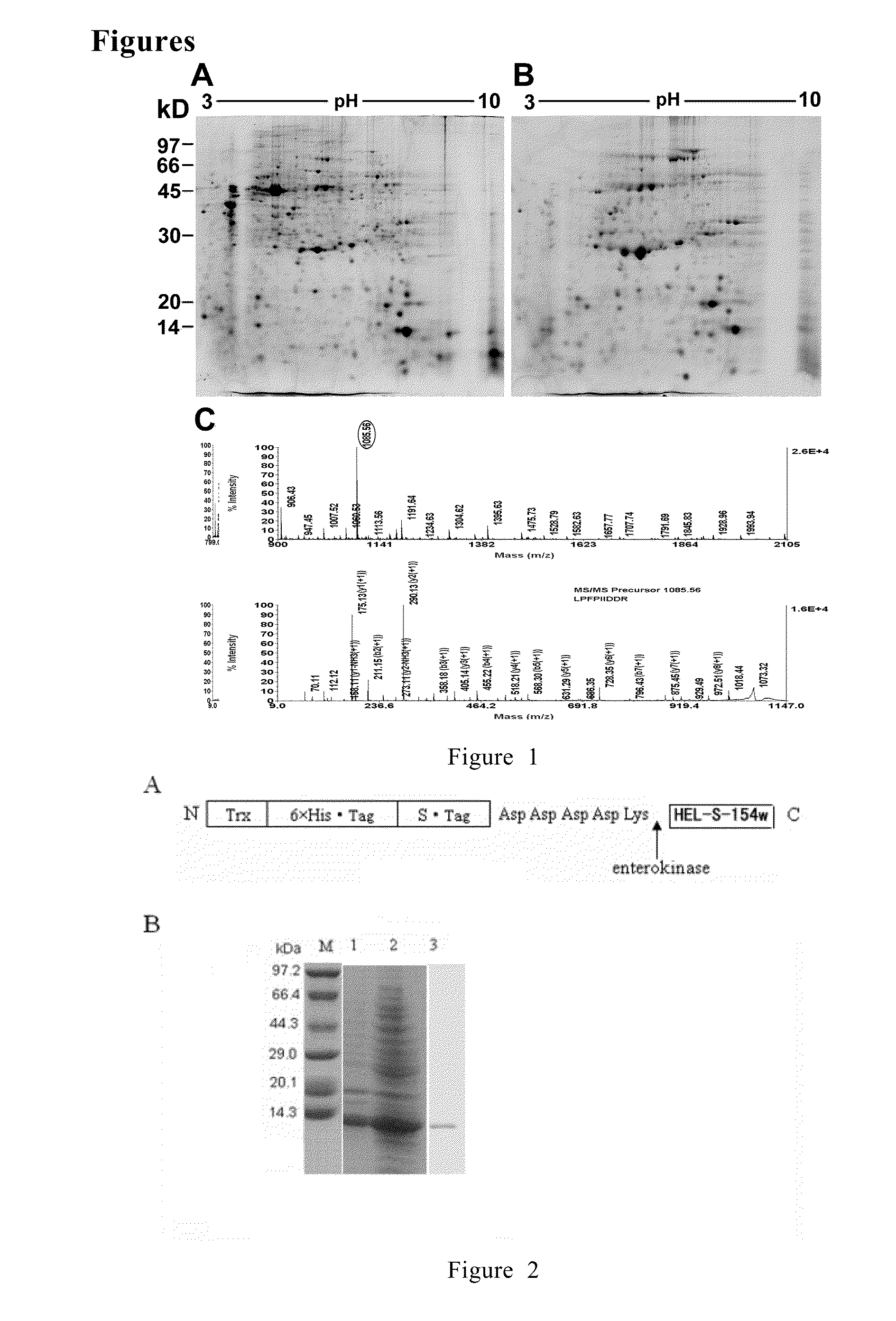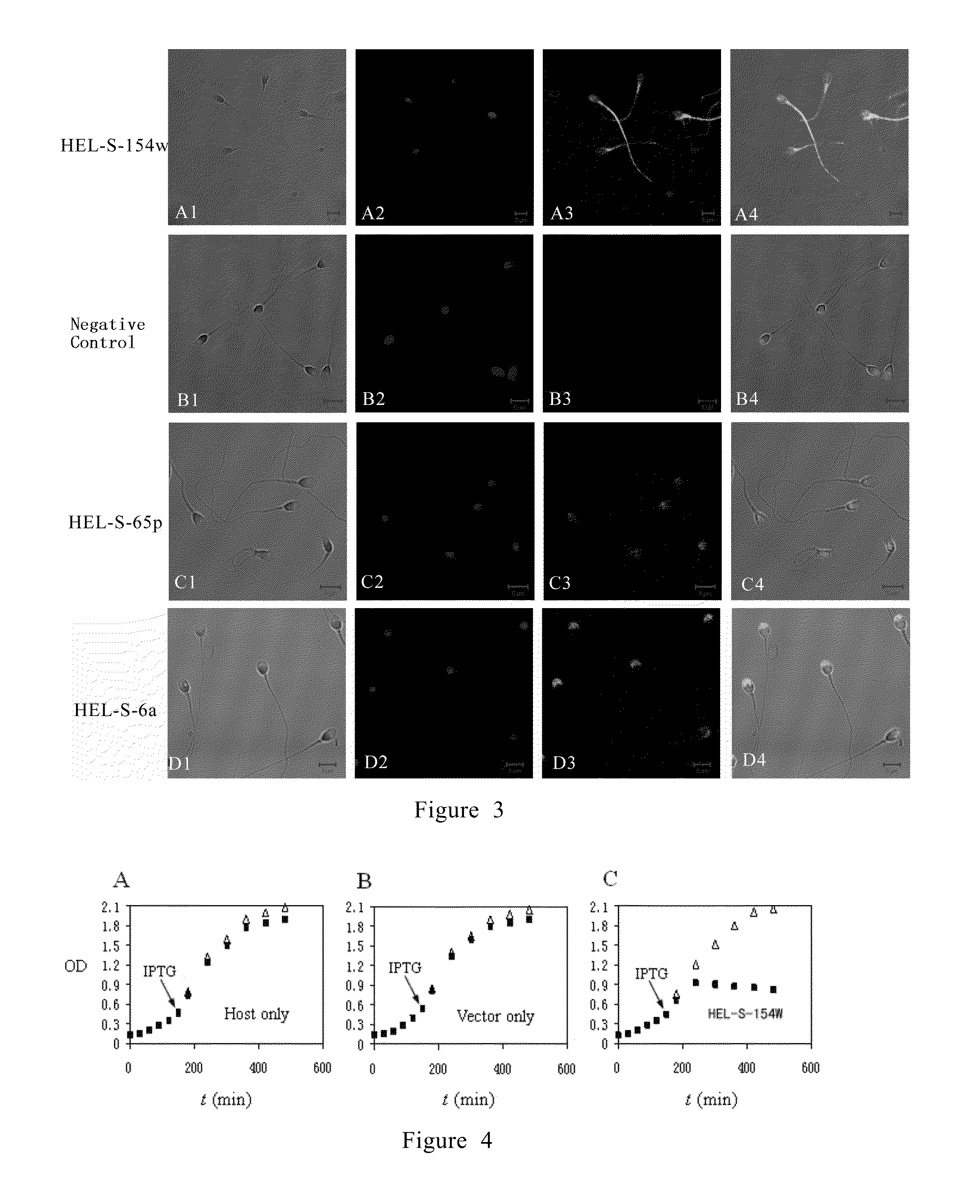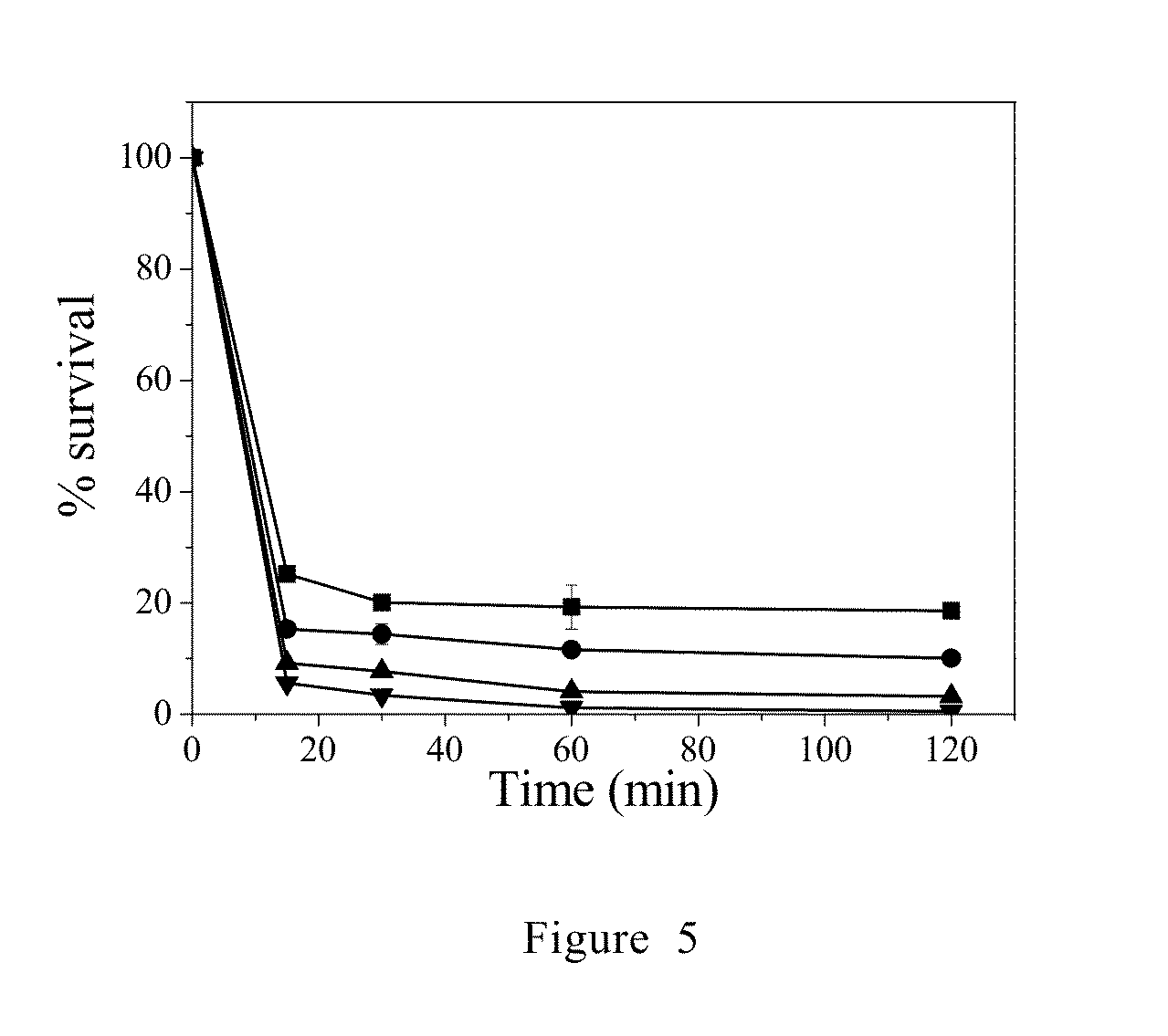Detection method for 305 fertility-associated sperm localization proteins ex-pressed in human testis and epididymis
a technology of sperm localization and detection method, which is applied in the field of detection, can solve the problems of inability to analyze the expression level of proteins in the seminal plasma systemically, inability to reflect on genetic research, and complex infertility
- Summary
- Abstract
- Description
- Claims
- Application Information
AI Technical Summary
Benefits of technology
Problems solved by technology
Method used
Image
Examples
example 1
[0059]Epididymal and testicular samples were taken from young males (27-30 years old) of accidental death with childbearing history, and without the record of reproductive system diseases. The protocols of body donation to medical research were signed with their families, and meanwhile, were approved by the Ethics Committee of Yantai Yuhuangding Hospital. After the samples have been obtained by surgery, protein samples were extracted immediately from the epididymal luminal fluid and testicular tissue and the proteins were quantified. Equivalent samples from more than three individuals were mixed, and the two-dimensional gel electrophoresis separation was performed. The common proteins from the three repeated electrophoresis were characterized by mass spectrometry, wherein, the number of proteins with clear localization in sperms was 319.
example 2
Sperm Preparation
[0060]Normal semen was liquefied for 30 min at 37° C., and 1.0 ml of semen was transferred into Earle's solution equilibrated for 12 h under 37° C., 5% CO2 and saturated humidity. The tube was tilted for about 45° and incubated for 60 min for the sperms with better activity substantially going upward, and the tube was centrifuged at 600 g for 10 min. The supernatant was discarded and the precipitate was washed twice for use. The normal semen was provided by Yantai Yuhuangding Hospital Reproductive Center with the consent of the donors.
example 3
Expression Vector Construction and Protein Purification
[0061]Protein products of 319 genes said above were obtained by the following method. According to the gene sequence, a pair of specific primers was synthesized to amplify the mature coding regions. cDNA library of human epididymis prepared by a routine method was used as templates, and the target genes were directly amplified by PCR. Then the target genes were cloned to commercially available pGM-T vector (purchased from Shanghai BestBio Corporation) and sequenced to be correct. The sequenced genes were cloned to the expression vector pET32b (+) (purchased from Shanghai BestBio Corporation) through the enzyme cleavage sites, and kept consistent with the ORF of the fusion tag. The recombinant expression vectors were transferred into the competent cell of a routine E. coli BL21 (DE3) and the engineered bacteria were obtained. After being expressed by induction using 1 mM IPTG at 32° C., the recombinant proteins were separated and...
PUM
| Property | Measurement | Unit |
|---|---|---|
| humidity | aaaaa | aaaaa |
| temperature | aaaaa | aaaaa |
| depth | aaaaa | aaaaa |
Abstract
Description
Claims
Application Information
 Login to View More
Login to View More - R&D
- Intellectual Property
- Life Sciences
- Materials
- Tech Scout
- Unparalleled Data Quality
- Higher Quality Content
- 60% Fewer Hallucinations
Browse by: Latest US Patents, China's latest patents, Technical Efficacy Thesaurus, Application Domain, Technology Topic, Popular Technical Reports.
© 2025 PatSnap. All rights reserved.Legal|Privacy policy|Modern Slavery Act Transparency Statement|Sitemap|About US| Contact US: help@patsnap.com



